Development and Evaluation of a Mobile Application Suite for Enhancing the Social Inclusion and Well-Being of Seniors
Abstract
:1. Introduction
1.1. Background and Motivation
- All kinds of social relationships (family and friends);
- Activities of social interest (e.g., participation in voluntary groups);
- Cultural activities (e.g., theatre, cinema etc.);
- Basic services (health services, banking, shopping, public transportation, etc.);
- News and information about daily activities.
1.2. Related Work
1.3. Contribution
2. Methodology
2.1. Human Centered Design
2.1.1. Research Tools
- Lack of connectedness with others: The elderly are at a higher risk of being alienated from the rest of society and live in solitude. One factor is the replacement of the extended family model with the nuclear family model combined with the heavy working schedules of seniors’ offspring. Another important factor that may intensify isolation is seniors’ vulnerable health and motor difficulties which may prevent them from frequently getting out from their home and being in contact with other people, such as relatives, friends and acquaintances.
- Memory loss: Ageing leads to memory problems that may range from a mild level e.g., forgetting names, phone numbers and misplaced objects to a more severe one e.g., forgetting to take medicines or attending a scheduled activity or giving directions to get at home. Staying social, physical and mental exercising, managing stress, sleeping well and eating healthy food can improve memory and cognitive skills.
- Falling incidents: Elderly people are particularly vulnerable and prone to falls. Approximately one third of the elder population falls at least once per year [36]. Many falls (70 to 80 percent) do not result in injuries [37]. Approximately half of the non-injured fallers require assistance in order to get up and for those incidents the period of time required until the aid is provided often influences their health consequences. Therefore, in case of a fall it is essential to have someone for assistance or be immediately notified.
- Access to social care services: Due to health issues the elderly often need assistance on a variety of everyday activities, such as cleaning, cooking and shopping along with informative support on activities such as meeting with others and participating in social and leisure events. In this context, various social care services are usually provided by the state or non-governmental organizations. Providing information on what social services or care centers are available and facilitating their access is useful for the elderly.
- An easy way to contact friends and relatives.
- An SOS button to notify family in case of an emergency.
- A simple way to find cultural events on the Internet.
- I would like to get informed on welfare services provided in my city.
- Pension information will be good to have.
- An easy medium to notify family members on my planned activities.
- A friendly way to track the news I’m interested to.
- In the last six months I fell twice. I need an easy way to notify my son in such a case.
- Due to chronic health problems I get many medicines on a daily basis. I need a reminder because I’ m forgetting sometimes.
- I like new technology but it is difficult to use. I need an easy way to find and use what I want.
- I would like to know other people with similar interests.
- I have vision problems. So I can’t read text on screen. Voice notifications will be good to have.
2.1.2. Design Questionnaire
- Large size icons, menus and text to be easy to navigate and handle the application.
- Simplified layout and suitable content to facilitate accessing (e.g., avoiding zoom in/out or extensive scrolling) and comprehension.
- Simple and clear interface regarding the access of basic functionality.
- Accessibility and customization options provided to the user e.g., changing the font size, user interface themes, etc.
- Integration of sound notifications in combination to visual notifications when the application provides feedback to the user (e.g., an error indication).
- Support of voice commands.
2.1.3. Summary
- Specification of user requirements for the needed services that could assist the well-being and social inclusion of seniors based on the interactions with the involved stakeholders.
- Prioritization of the envisioned system services, for instance fall detection, activities reminder and sharing experiences were found to be more preferable than e-payments and gaming.
- Specification of user interface design requirements that would improve the usability of the application suite and its various functionalities.
- Additional ideas for service design such as the personalization of the provided services based on user profile information (e.g., preferences, location, and calendar activities) or the generalization of services (e.g., reminders of tasks in general and not only medicine).
- Understanding the characteristics and limitations of seniors as users of the technology and clarifying the technology role in terms of possibilities and barriers in supporting seniors’ daily activities.
2.2. Accessibility
- Text readability: use font size of 36–48 pt. on mobile apps (or 14–18 pt. on web apps) and sans serif style (e.g., Arial, Verdana), avoid special styles (italics, underline, all caps), important information should be highlighted, use common language and provide the ability to alter font and text properties by the end-users.
- Simple layout structure: use simple and consistent design and layout, use left-aligned text, constant spacing between words and line spacing of 1.5 lines, avoid large blocks of text and text over images and group together related topics.
- Sharp contrast between background and font color: an example is black text on white/yellow background or the opposite, customization can satisfy different user preferences, avoid different background colors.
- Information accessibility: provide text alternatives (e.g., audio for visually impaired users), provide users enough time to read and use content, provide ways to help users navigate to the content of interest, help users avoid and correct mistakes, use text instead of images of text in web content.
- Minimize text input: Text fields should be replaced with other forms of input such as radio buttons or lists so that users select their choices instead of typing.
- Continuous assistance: A help button should be present in every activity window in order to provide information and examples pertinent to the interaction of the user with the content.
2.3. Services
2.3.1. Social Networking
2.3.2. Activity/Medicine Reminder
2.3.3. Fall Detection
2.3.4. Information
2.3.5. Everyday Activity Facilitation
2.3.6. Special Purpose
2.4. Service-Oriented Architecture
- Personal: timeline-based information shared by a person with family and friends, options to publish new content and manage profiles and settings.
- Social network: timeline-based information shared within one’s network and options to search and connect with new peers.
- Groups: timeline-based information shared within a group and options to join new groups.
- Topics of interest: options to filter content with specific keywords associated with topics of interest (e.g., hobbies, news, channels, habits, etc.).
2.5. Security and Privacy
3. Evaluation
3.1. Usability and Acceptability
3.2. Service Usage
3.3. Well-Being and Loneniness
4. Discussion
5. Conclusions
- Adopting human centered design approach was crucial in order to design a system that takes into account the special needs of elderly and is user-friendly.
- Context information (e.g., location, acceleration) allowed the provision of value added services to the users.
- User control on personal information, data security mechanisms and privacy policies are critical elements in the design of a system that is addressed to people that have an a priori feeling of worry for the technology.
- Usability and accessibility of the system was validated by real users (n = 22) in a pilot study of eight weeks with positive results.
- The well-being in terms of loneliness was measured before and after the trial and found to have been improved but this should be validated over a longer period of time and with a larger user sample.
- The majority of participants declared that they would be willing to subscribe for accessing such on-line services paying a small monthly fee indicating the business opportunities of Senior App Suite.
Acknowledgments
Author Contributions
Conflicts of Interest
Appendix A
| Design Questionnaire of the Senior App Suite. *Required | ||||
| How often do you use a mobile device (smartphone or tablet) in your daily life? * | ||||
| □ Very often | □ Fairly often | □ Sometimes | □ Almost never | □ Never |
| What is the primary purpose of using such a device? * | ||||
| □ News | ||||
| □ Access to social networks (facebook, twitter, etc.) | ||||
| □ Information about social events, activities, etc. | ||||
| □ Electronic payments (e.g., e-banking) | ||||
| □ Entertainment (e.g., games) | ||||
| □ Other:______________________________________ | ||||
| Having services (as those mentioned above) assembled into a single place and accessed whenever needed, instead of separately looking for them online, would be useful. * | ||||
| □ Strongly agree | □ Agree | □ Neither agree or disagree | □ Disagree | □ Strongly disagree |
| System services | ||||
| What services would you prefer to have in a web portal? * | ||||
| □ News | ||||
| □ Access to social networks (facebook, twitter, etc.) | ||||
| □ Information about social events, activities, etc. | ||||
| □ Electronic payments (e.g., e-banking) | ||||
| □ Entertainment (e.g., games) | ||||
| □ Other: ______________________________________ | ||||
| A medication reminder service would be useful. * | ||||
| □ Strongly agree | □ Agree | □ Neither agree or disagree | □ Disagree never | □ Strongly disagree |
| A fall detection service and subsequent automatic notification of relatives or friends would be useful. * | ||||
| □ Strongly agree | □ Agree | □ Neither agree or disagree | □ Disagree never | □ Strongly disagree |
| The system should provide reminders for scheduled activities and important events * | ||||
| □ Strongly agree | □ Agree | □ Neither agree or disagree | □ Disagree | □ Strongly disagree |
| Would a monthly pension compensation information service be helpful? * | ||||
| □ Strongly agree | □ Agree | □ Neither agree or disagree | □ Disagree | □ Strongly disagree |
| Other services you would like to have in such a system? | ||||
| ______________________________________ | ||||
| Desirable features for an older adult support application | ||||
| For a mobile application (e.g. tablet, smartphone app) | ||||
| Icons and menus should be in large size to make it easy to navigate and operate the application * | ||||
| □ Strongly agree | □ Agree | □ Neither agree or disagree | □ Disagree | □ Strongly disagree |
| Receive feedback in case of wrong interaction * | ||||
| □ Strongly agree | □ Agree | □ Neither agree or disagree | □ Disagree | □ Strongly disagree |
| Use voice commands * | ||||
| □ Strongly agree | □ Agree | □ Neither agree or disagree | □ Disagree | □ Strongly disagree |
| Preferable device for using the application: * | ||||
| □ Tablet | ||||
| □ Smartphone | ||||
| □ Both | ||||
| Other desirable features | ||||
| ______________________________________ | ||||
| Personal information | ||||
| Gender * | ||||
| □ Male | □ Female | |||
| Age * | ||||
| Choose from list ▼ | ||||
| Profession (for pensioners, profession before retirement) | ||||
| ______________________________________ | ||||
| Education * | ||||
| □ Primary education | □ Secondary education (3 years) | □ Secondary education (6 years) | □ Higher education | |
| Nationality | ||||
| Choose from list ▼ | ||||
| The questionnaire was completed with the help of a relative or friend * | ||||
| □ No, I'm comfortable using on-line tools | ||||
| □Yes, I needed help to complete the questionnaire | ||||
References
- United Nations Department of Economic and Social Affairs. World Population Ageing 2013. Available online: http://www.un.org/en/development/desa/population/publications/pdf/ageing/WorldPopulationAgeing2013.pdf (accessed on 18 May 2017).
- Mayes, D.G.; Berghman, J.; Salais, R. Social Exclusion and European Policy; Edward Elgar: Cheltenham/Northampton, MA, USA, 2001. [Google Scholar]
- Popay, J.; Escorel, S.; Hernández, M.; Johnston, H.; Mathieson, J.; Rispel, L. Understanding and Tackling Social Exclusion: Final Report to the WHO Commission on Social Determinants of Health; Report of the Social Exclusion Knowledge Network; World Health Organization: Geneva, Switzerland, 2008. [Google Scholar]
- Borglin, G.; Edberg, A.; Hallberg, I.R. The experience of quality of life among older people. J. Aging Stud. 2005, 19, 201–220. [Google Scholar] [CrossRef]
- Giles, L.C.; Glonek, G.F.; Luszcz, M.A.; Andrews, G.R. Effect of social networks on 10 year survival in very old Australians: The Australian longitudinal study of aging. J. Epidemiol. Community Health 2005, 59, 574–579. [Google Scholar] [CrossRef] [PubMed]
- Gabriel, Z.; Bowling, A. Quality of life in old age from the perspectives of older people. In Growing Older: Quality of Life in Old Age; Walker, A., Hennessy, C.H., Eds.; Open University Press: Maidenhead, UK, 2004; pp. 14–34. [Google Scholar]
- Leist, A.K. Social media use of older adults: A mini-review. Gerontology 2013, 59, 378–384. [Google Scholar] [CrossRef] [PubMed]
- Rashidi, P.; Mihailidis, A. A survey on ambient-assisted living tools for older adults. IEEE J. Biomed. Health Inform. 2013, 17, 579–590. [Google Scholar] [CrossRef] [PubMed]
- Vetere, F.; Davis, H.; Gibbs, M.; Howard, S. The magic box and collage: Responding to the challenge of distributed intergenerational play. Int. J. Hum. Comput. Stud. 2009, 67, 165–178. [Google Scholar] [CrossRef]
- Röcker, C.; Ziefle, M.; Holzinger, A. Social inclusion in ambient assisted living environments: Home automation and convenience services for elderly users. In Proceedings of the International Conference on Artificial Intelligence, Las Vegas, NV, USA, 18–20 July 2011; pp. 55–59. [Google Scholar]
- Wada, K.; Ikeda, Y.; Inoue, K.; Uehara, R. Development and preliminary evaluation of a caregiver’s manual for robot therapy using the therapeutic seal robot Paro. In Proceedings of the 19th International Symposium in Robot and Human Interactive Communication, Viareggio, Italy, 13–15 September 2010; pp. 533–538. [Google Scholar]
- Mubashir, M.; Shao, L.; Seed, L. A survey on fall detection: Principles and approaches. Neurocomputing 2013, 100, 144–152. [Google Scholar] [CrossRef]
- Qudah, I.; Leijdekkers, P.; Gay, V. Using mobile phones to improve medication compliance and awareness for cardiac patients. In Proceedings of the 3rd International Conference on PErvasive Technologies Related to Assistive Environments, Samos, Greece, 23–25 June 2010; pp. 1–7. [Google Scholar]
- Vuong, N.K.; Chan, S.; Lau, C.T.; Lau, K.M. Feasibility study of a real-time wandering detection algorithm for dementia patients. In Proceedings of the First ACM MobiHoc Workshop on Pervasive Wireless Healthcare, Paris, France, 16 May 2011; pp. 1–4. [Google Scholar]
- Charness, N.; Boot, W.R. Aging and information technology use: Potential and barriers. Curr. Dir. Psychol. Sci. 2009, 18, 253–258. [Google Scholar] [CrossRef]
- García-Peñalvo, F.J.; Conde, M.Á.; Matellán-Olivera, V. Mobile apps for older users–The development of a mobile apps repository for older people. In Learning and Collaboration Technologies. Technology-Rich Environments for Learning and Collaboration; Zaphiris, P., Ioannou, A., Eds.; Springer: Berlin/Heidelberg, Germany, 2014; Volume 8524, pp. 117–126. [Google Scholar]
- Lorenz, A.; Oppermann, R. Mobile health monitoring for the elderly: Designing for diversity. Pervasive Mob. Comput. 2009, 5, 478–495. [Google Scholar] [CrossRef]
- Díaz-Bossini, J.M.; Moreno, L. Accessibility to mobile interfaces for older people. Proced. Comput. Sci. 2014, 27, 57–66. [Google Scholar] [CrossRef]
- van den Broek, G.; Cavallo, F.; Wehrmann, C. AALIANCE Ambient Assisted Living Roadmap; IOS Press: Amsterdam, The Netherlands, 2010. [Google Scholar]
- Ambient Assisted Living Joint Programme, ICT for Ageing Well. Catalogue of Projects. Available online: http://www.aal-europe.eu/wp-content/uploads/2015/09/15–1805_AAL_Catalogue_2015_ONLINE.pdf (accessed on 18 May 2017).
- Steen, M.G.D.; Ervasti, M.; Harjumaa, M.; Bourke, S.; Hernandez, V.; Min, M.; Prins, S. WeCare: Cooperating with older people in the design and evaluation of online social networking services. In Ambient Assisted Living; Garcia, N.M., Rodrigues, J.J., Eds.; CRC Press: Boca Raton, FL, USA, 2015; pp. 647–676. [Google Scholar]
- Pensas, H.; Liolis, K.; Kouvatseas, G.; Vainio, A.M.; Wimmer, B.; Kaila, L.; Kivimäki, T.; Laitinen, S.; Vanhala, J. AMCOSOP: A social networking system for the elderly. In Proceedings of the 15th International Academic MindTrek Conference: Envisioning Future Media Environments, Tampere, Finland, 28–30 September 2011; pp. 329–331. [Google Scholar]
- Kivimäki, T.; Kölndorfer, P.; Vainio, A.M.; Pensas, H.; Vuorela, T.; Garschall, M.; Vanhala, J. User interface for social networking application for the elderly. In Proceedings of the 6th International Conference on Pervasive Technologies Related to Assistive Environments, Rhodes, Greece, 29–31 May 2013. [Google Scholar]
- Haritou, M.; Anastasiou, A.; Schwarz-Woelzl, M.; Holocher-Ertl, T.; Mulquin, M.; Olalde, I.; Kouris, I.; Koutsouris, D.D. A context-aware social networking platform built around the needs of elderly users: The Go-myLife experience. In mHealth Ecosystems and Social Networks in Healthcare; Lazakidou, A., Zimeras, S., Iliopoulou, D., Koutsouris, D.D., Eds.; Springer International Publishing: Cham, Switzerland, 2016; pp. 119–135. [Google Scholar]
- Burkhard, M.; Koch, M. Social interaction screen. Making social networking services accessible for elderly people. i-com Zeitschrift Interakt. Kooperat. Medien 2012, 11, 3–7. [Google Scholar] [CrossRef]
- Cantwell, D.; Broin, D.O.; Palmer, R.; Doyle, G. Motivating elderly people to exercise using a social collaborative exergame with adaptive difficulty. In Proceedings of the 6th European Conference on Games Based Learning, Cork, Ireland, 4–5 October 2012; p. 615. [Google Scholar]
- Petäkoski-Hult, T.; Vainikainen, S.; Kurki, M.; Lehtinen, L.; Bosco, F. OWELA (Open WEb LAb) as a tool in the SOMEDALL project. In Proceedings of the 4th AAL Forum, Eindhoven, The Netherlands, 24–27 September 2012; pp. 547–551. [Google Scholar]
- Leal, A.S.; Bogi, A. Good Practices Handbook. Available online: http://cordis.europa.eu/docs/projects/cnect/8/297298/080/deliverables/001-D37GoodPracticeHandbook.pdf (accessed on 18 May 2017).
- Oscar Senior. Available online: http://www.oscarsenior.com/ (accessed on 18 May 2017).
- Seniors Phone. Available online: http://www.seniorsphone.mobi/ (accessed on 18 May 2017).
- Casas, R.; Marín, R.B.; Robinet, A.; Delgado, A.R.; Yarza, A.R.; Mcginn, J.; Picking, R.; Grout, V. User modelling in ambient intelligence for elderly and disabled people. In Computers Helping People with Special Needs; Miesenberger, K., Klaus, J., Zagler, W., Karshmer, A., Eds.; Springer: Berlin/Heidelberg, Germany, 2008; Volume 5105, pp. 114–122. [Google Scholar] [CrossRef]
- Röcker, C. User-centered design of intelligent environments: Requirements for designing successful ambient assisted living systems. In Proceedings of the Central European Conference of Information and Intelligent Systems, Varazdin, Croatia, 18–20 September 2013; pp. 4–11. [Google Scholar]
- Wever, R.; van Kuijkb, J.; Boks, C. User-centred design for sustainable behaviour. Int. J. Sustain. Eng. 2008, 1, 9–20. [Google Scholar] [CrossRef]
- International Organization for Standardization (ISO). ISO 9241–210:2010—Ergonomics of Human-System Interaction—Part 210: Human-Centred Design for Interactive Systems; ISO: Geneva, Switzerland, 2010. [Google Scholar]
- ELDER TABLET Project Website. Available online: http://daisy.cti.gr/eltab/ (accessed on 18 May 2017).
- Hausdorff, J.M.; Rios, D.A.; Edelber, H.K. Gait variability and fall risk in community-living older adults: A 1-year prospective study. Arch. Phys. Med. Rehabil. 2001, 82, 1050–1056. [Google Scholar] [CrossRef] [PubMed]
- Sterling, D.A.; O’Connor, J.A.; Bonadies, J. Geriatric falls: Injury severity is high and disproportionate to mechanism. J. Trauma 2001, 50, 116–119. [Google Scholar] [CrossRef] [PubMed]
- Ambient Assisted Living and Well Being. Available online: https://www.facebook.com/ambientassistedlivingwellbeing/ (accessed on 18 May 2017).
- Senior Citizens Support Group. Available online: https://www.facebook.com/thescsg/ (accessed on 18 May 2017).
- Friends of the Elderly. Available online: https://www.facebook.com/FriendsElderly/ (accessed on 18 May 2017).
- Lee, Y.S. Older Adults’ User Experiences with Mobile Phones: Identification of User Clusters and User Requirements. Ph.D. Thesis, Virginia Polytechnic Institute and State University, Blacksburg, VA, USA, 3 September 2007. [Google Scholar]
- Shneiderman, B.; Plaisant, C.; Cohen, M.S.; Jacobs, S.M.; Elmqvist, N.; Diakopoulos, N. Designing the User Interface: Strategies for Effective Human-Computer Interaction, 6th ed.; Pearson: Upper Saddle River, NJ, USA, 2016. [Google Scholar]
- Hawthorn, D. Possible implications of aging for interface designers. Interact. Comput. 2000, 12, 507–528. [Google Scholar] [CrossRef]
- Lin, C.J.; Hsieh, T.L.; Shiang, W.J. Exploring the interface design of mobile phone for the elderly. In International Conference on Human Centered Design; Kurosu, M., Ed.; Springer: Berlin/Heidelberg, Germany, 2009; Volume 5619, pp. 476–481. [Google Scholar]
- Ziefle, M.; Bay, S. How older adults meet complexity: aging effects on the usability of different mobile phones. Behav. Inf. Technol. 2005, 24, 375–389. [Google Scholar] [CrossRef]
- Darroch, I.; Goodman, J.; Brewster, S.; Gray, P. The effect of age and font size on reading text on handheld computers. In Human-Computer Interaction—Interact 2005; Costabile, M.F., Paternò, F., Eds.; Springer: Berlin/Heidelberg, Germany, 2005; Volume 3585, pp. 253–266. [Google Scholar]
- W3C: Web Content Accessibility Guidelines 2.0. Available online: http://www.w3.org/TR/WCAG20/ (accessed on 18 May 2017).
- Rello, L.; Pielot, M.; Marcos, M.C. Make it big! The effect of font size and line spacing on online readability. In Proceedings of the 2016 CHI Conference on Human Factors in Computing Systems, Santa Clara, CA, USA, 7–12 May 2016; pp. 3637–3648. [Google Scholar]
- Facebook App Development. Available online: https://developers.facebook.com/docs/apps (accessed on 18 May 2017).
- Erl, T. Service-Oriented Architecture: Concepts, Technology, and Design; Prentice Hall: Upper Saddle River, NJ, USA, 2005. [Google Scholar]
- Costello, C. Elgg 1.8 Social Networking; Packt Publishing Ltd.: Birmingham, UK, 2012. [Google Scholar]
- Elgg Social Network Engine. Available online: https://elgg.org/ (accessed on 18 May 2017).
- Facebook Graph API. Available online: https://developers.facebook.com/docs/graph-api (accessed on 18 May 2017).
- Google Maps API. Available online: https://developers.google.com/maps/ (accessed on 18 May 2017).
- YouTube Data API. Available online: https://developers.google.com/youtube/v3/ (accessed on 18 May 2017).
- Venkatesh, V.; Bala, H. Technology acceptance model 3 and a research agenda on interventions. Decis. Sci. 2008, 39, 273–315. [Google Scholar] [CrossRef]
- Davis, F.D.; Bagozzi, R.P.; Warshaw, P.R. User acceptance of computer technology: A comparison of two theoretical models. Manag. Sci. 1989, 35, 982–1003. [Google Scholar] [CrossRef]
- Hair, J.F.; Black, W.C.; Babin, B.J.; Anderson, R.E.; Tatham, R.L. Multivariate Data Analysis, 7th ed.; Pearson/Prentice Hall: Upper Saddle River, NJ, USA, 2010. [Google Scholar]
- Russell, D.; Peplau, L.A.; Cutrona, C.E. The revised UCLA Loneliness Scale: Concurrent and discriminant validity evidence. J. Pers. Soc. Psychol. 1980, 39, 472–480. [Google Scholar]
- Pallant, J. SPSS Survival Manual; McGraw-Hill Education: Milton Keynes, UK, 2013. [Google Scholar]
- Cotten, S.R.; Anderson, W.A.; McCullough, B.M. Impact of internet use on loneliness and contact with others among older adults: Cross-sectional analysis. J. Med. Internet Res. 2013, 15, e39. [Google Scholar] [CrossRef] [PubMed]
- Jones, R.B.; Ashurst, E.J.; Atkey, J.; Duffy, B. Older people going online: Its value and before-after evaluation of volunteer support. J. Med. Internet Res. 2015, 17, e122. [Google Scholar] [CrossRef] [PubMed]
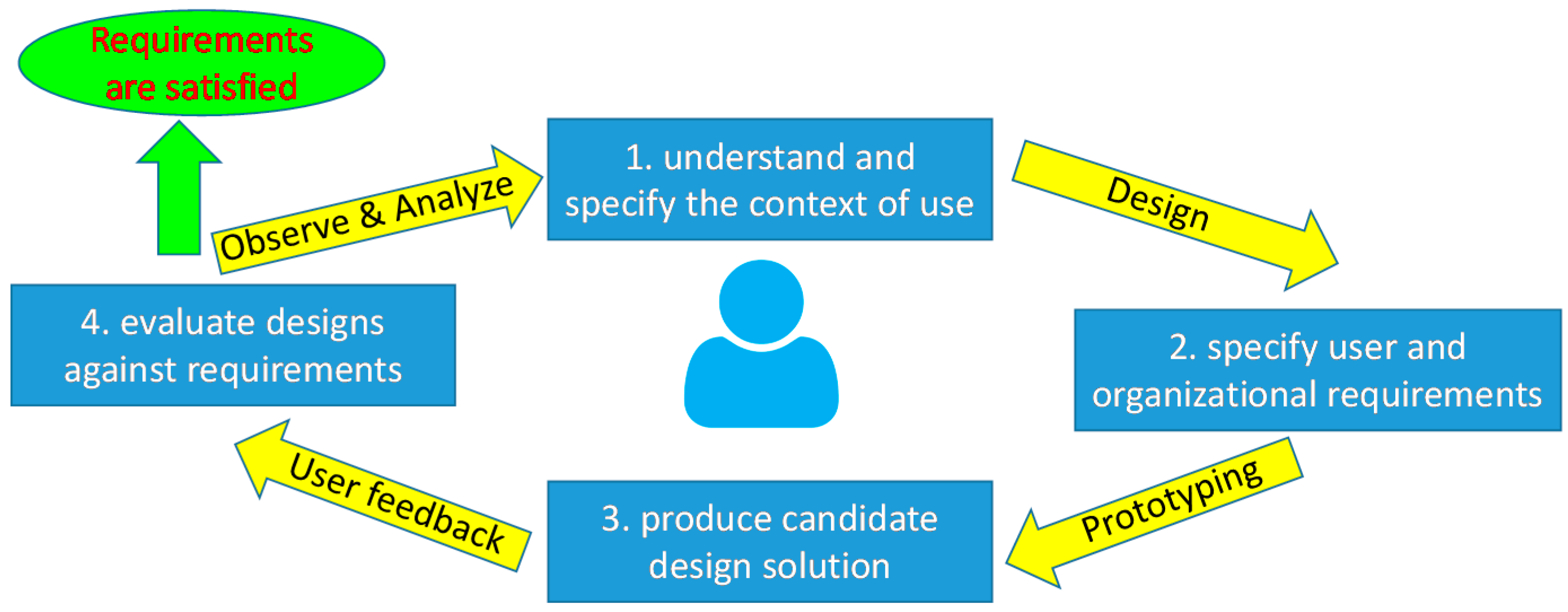
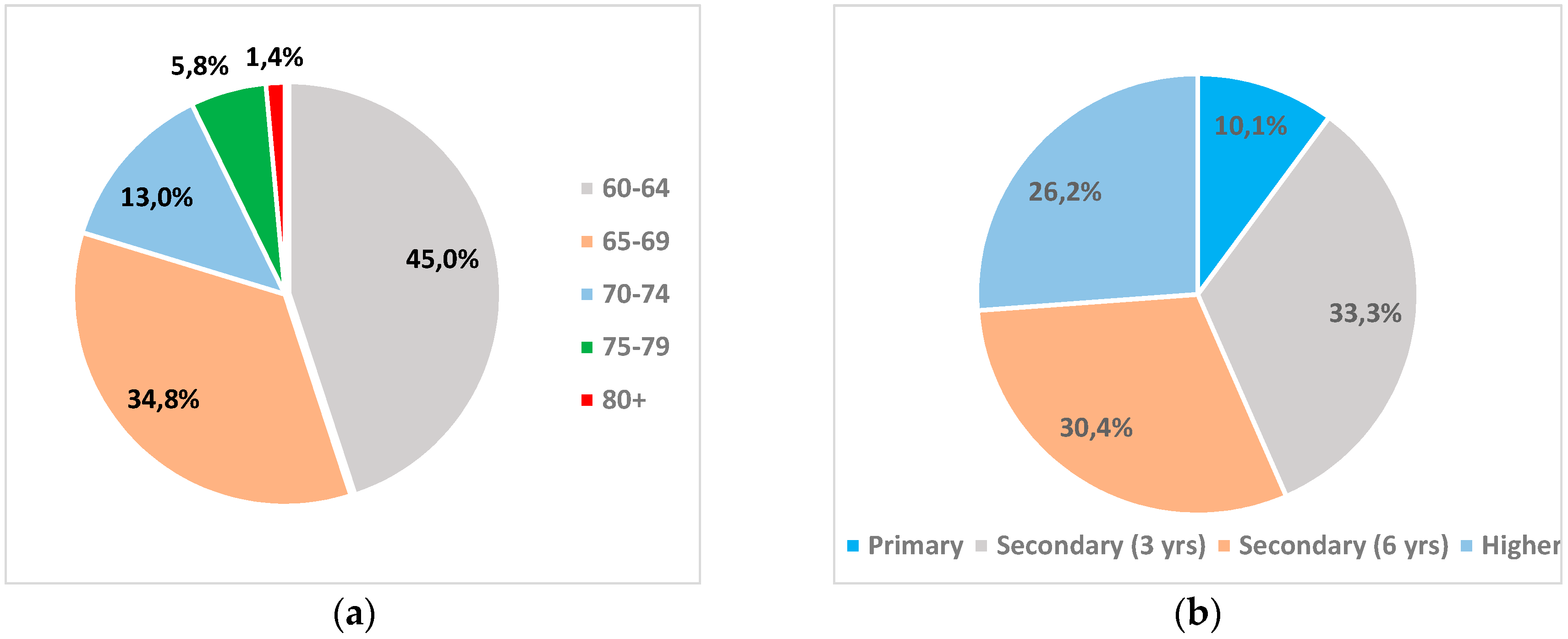
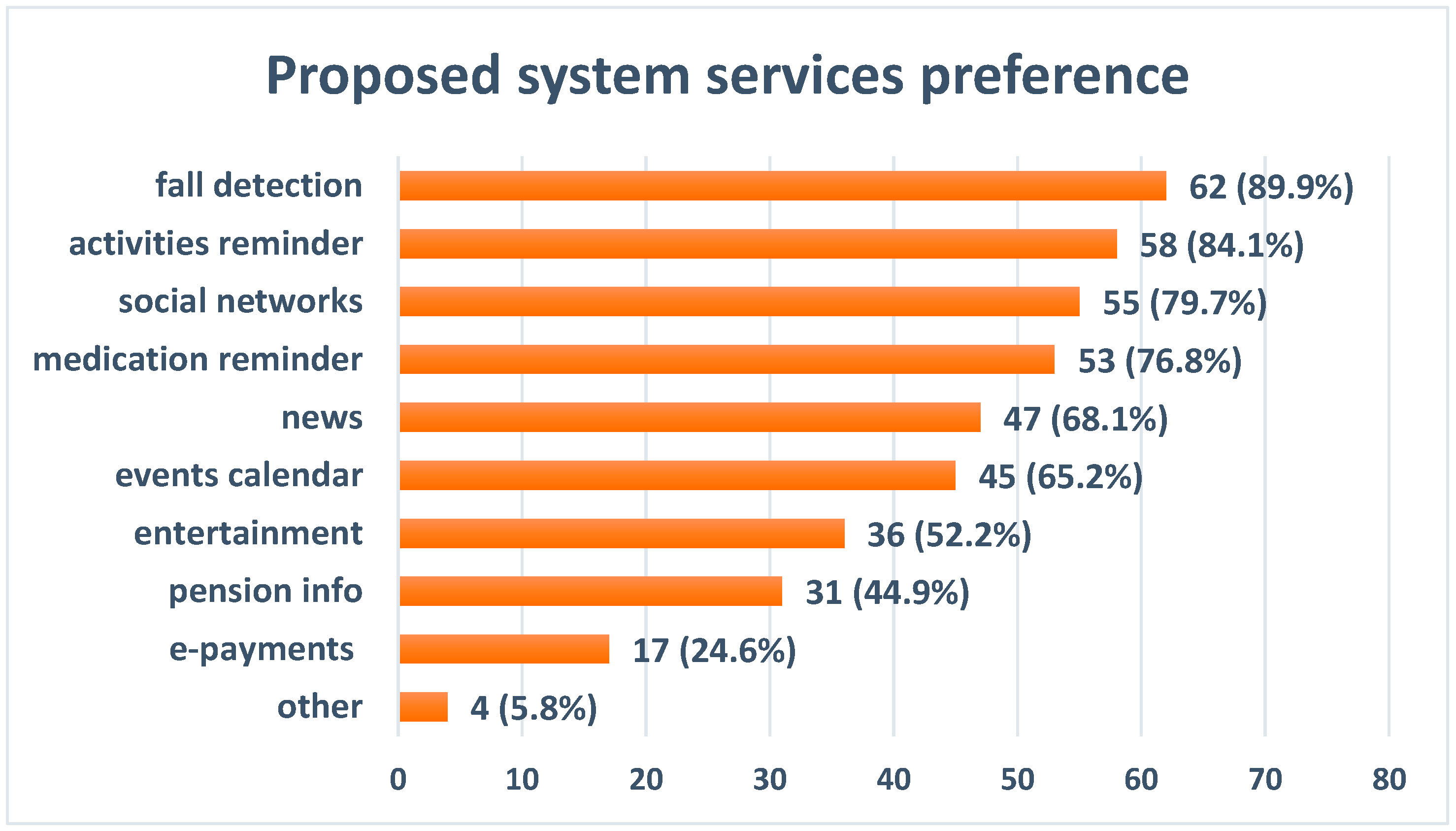

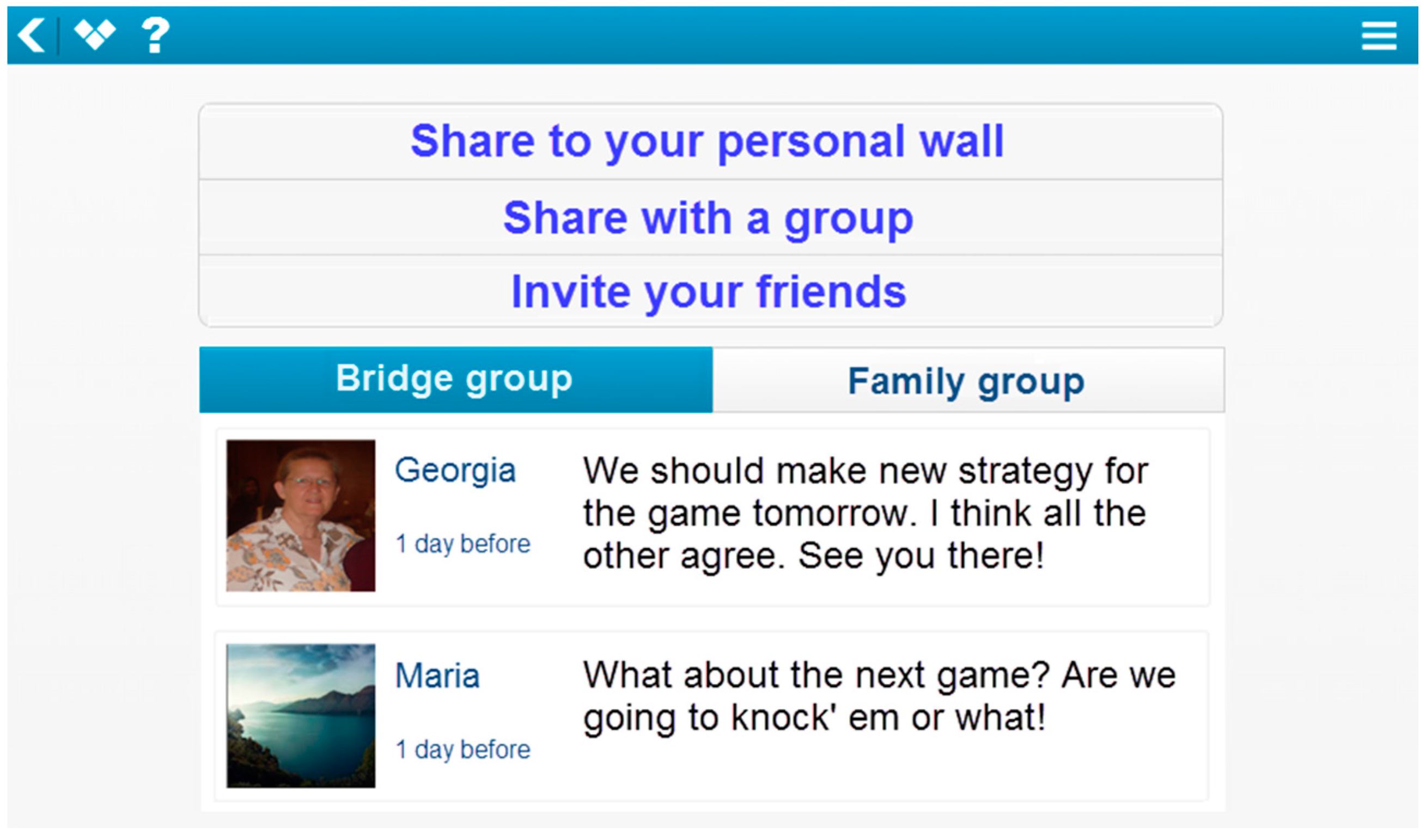
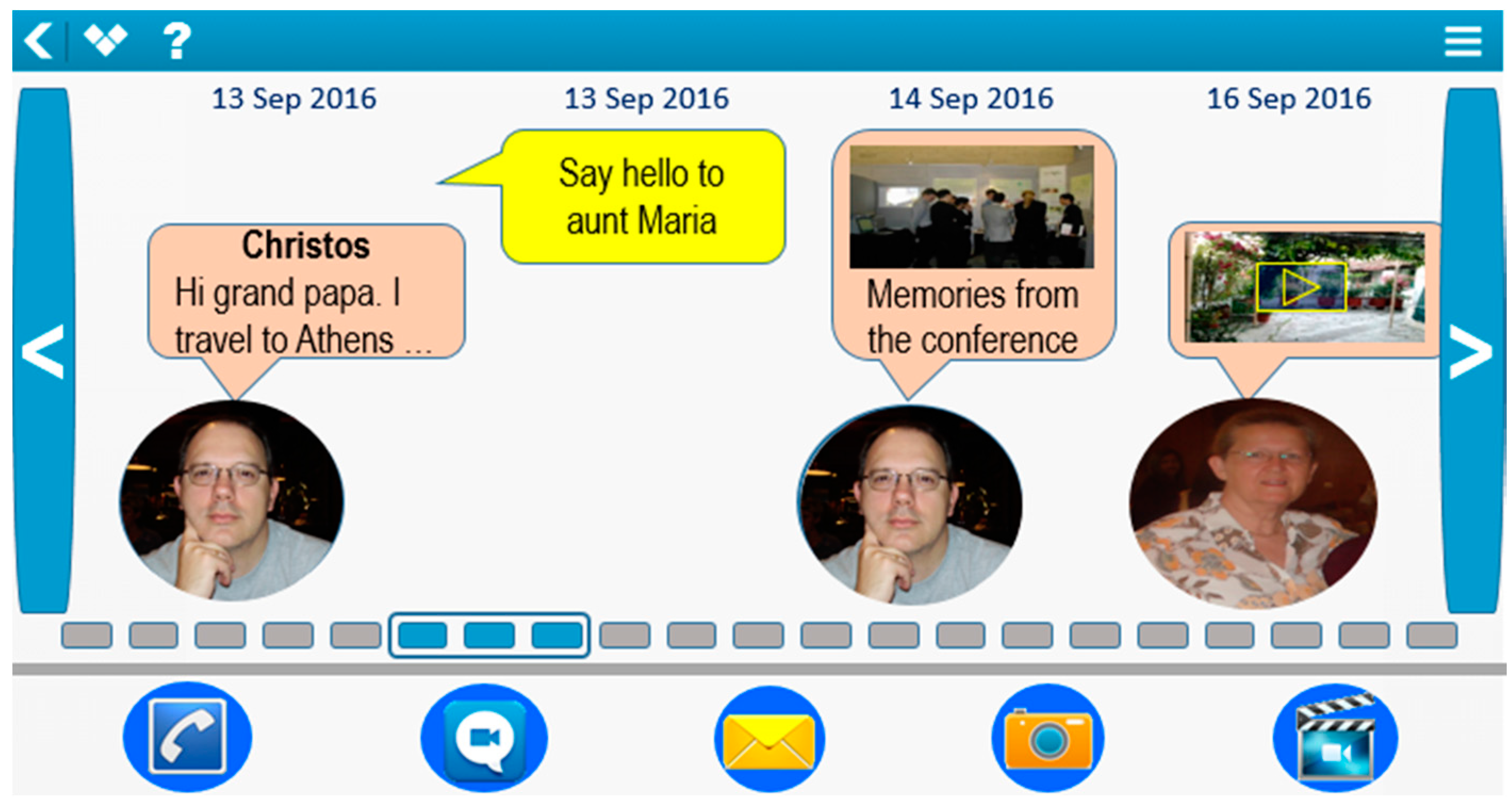
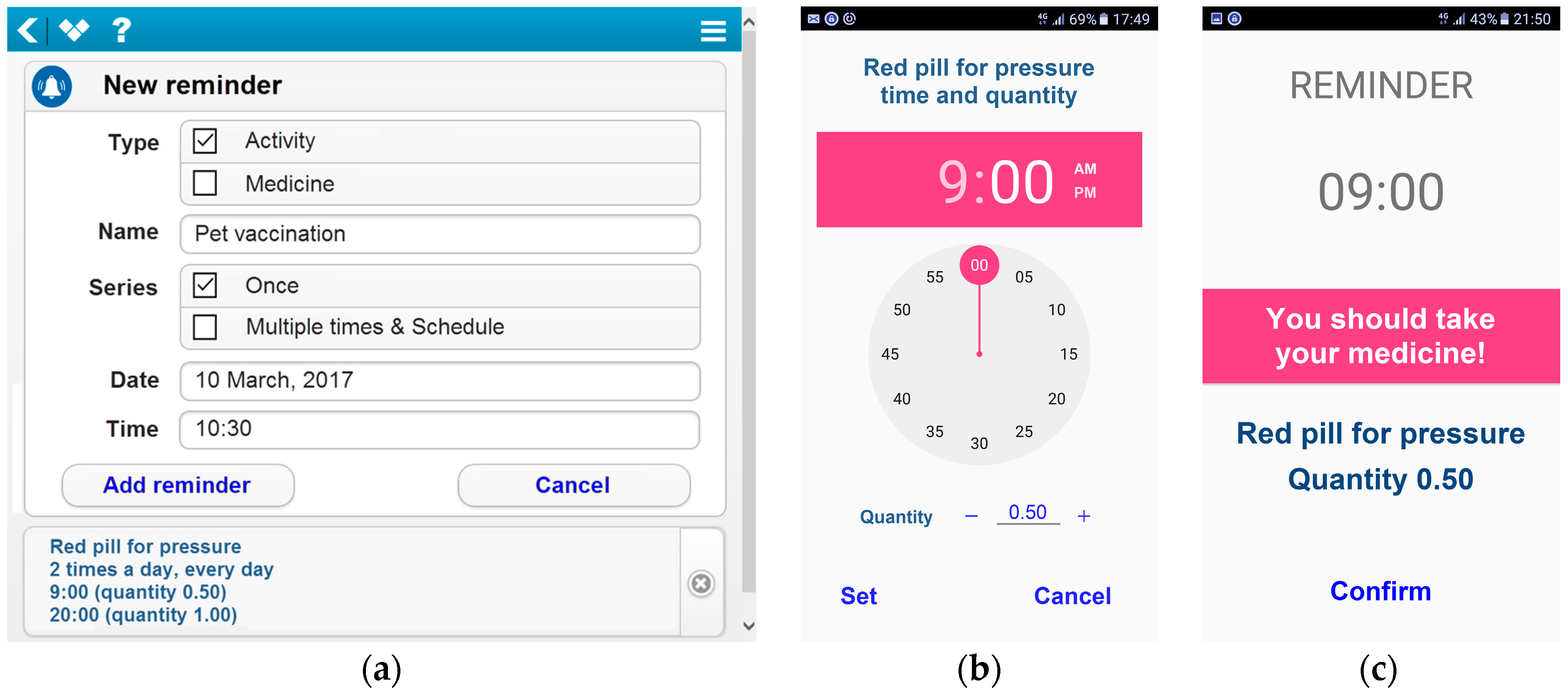
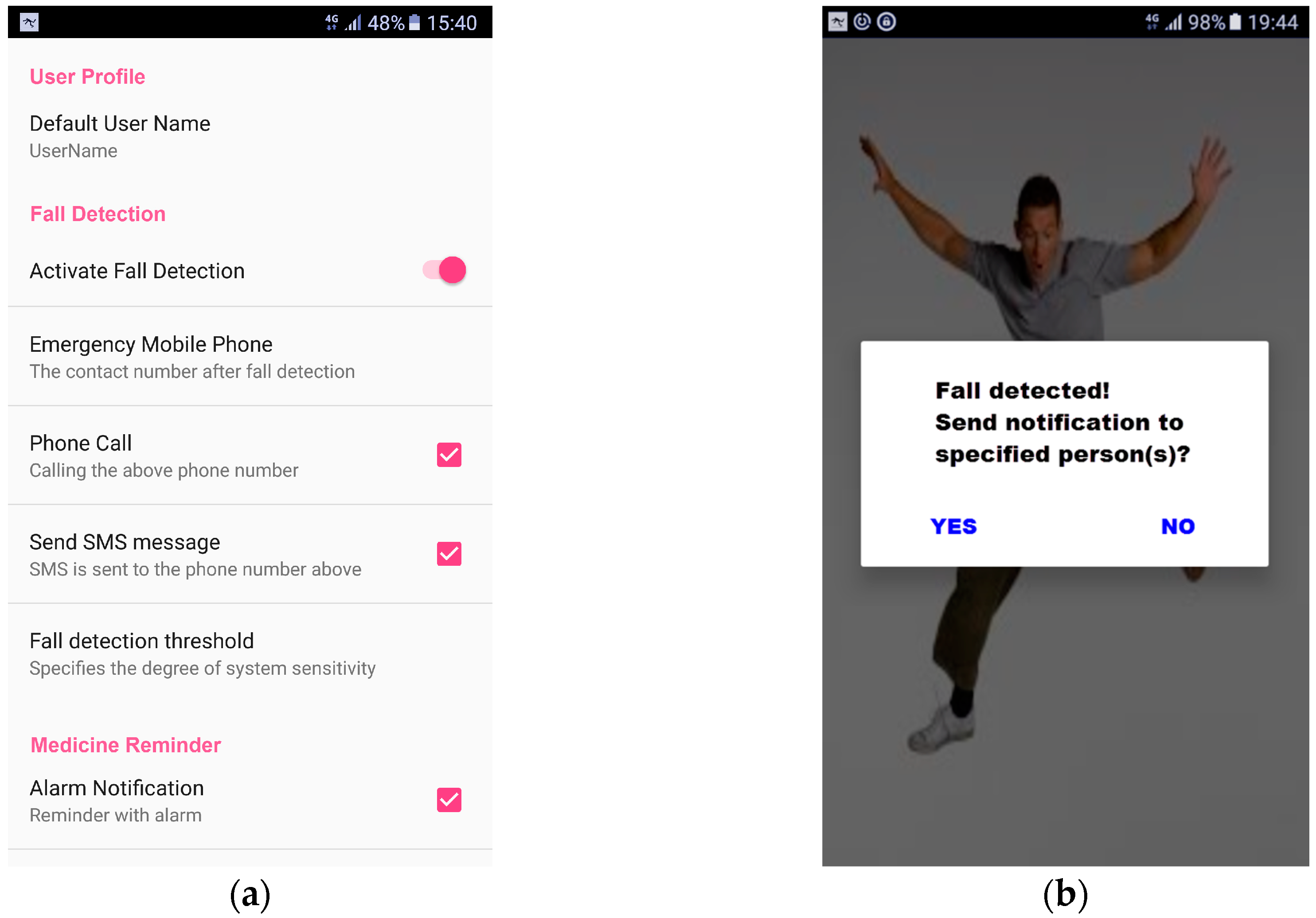
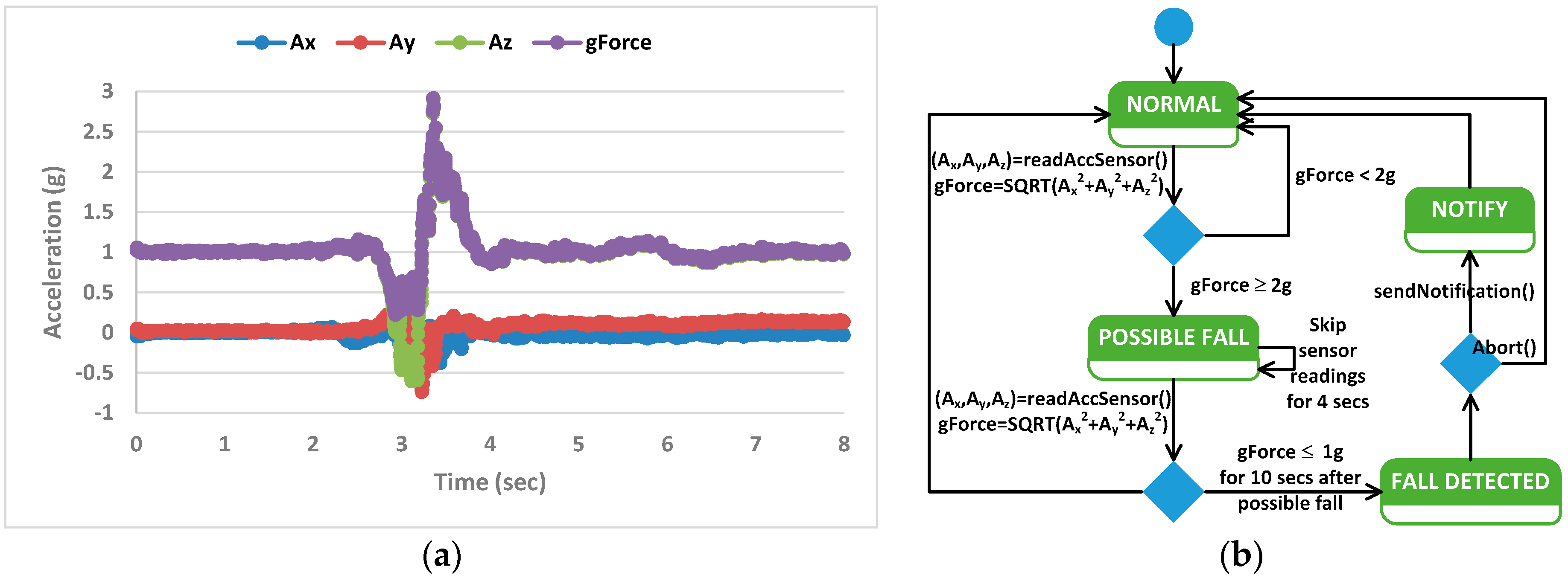


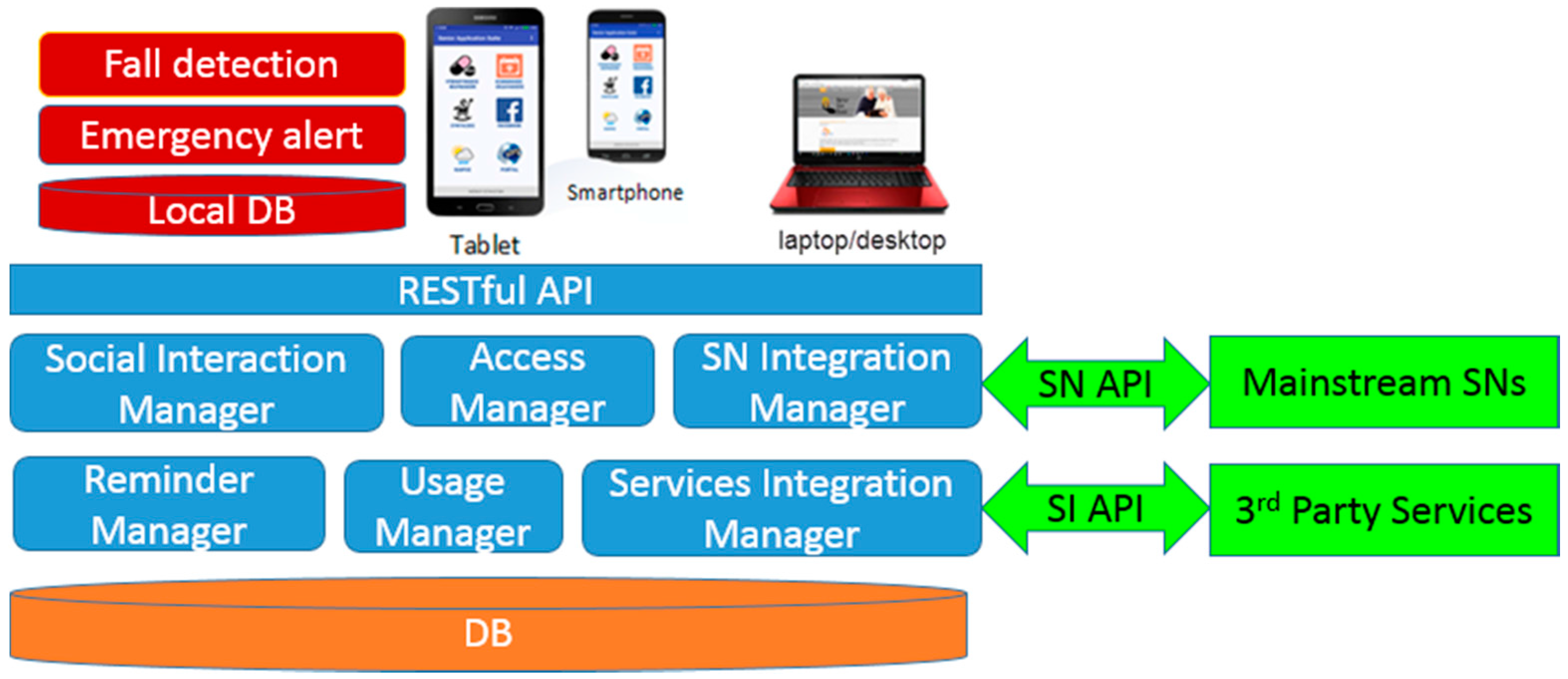
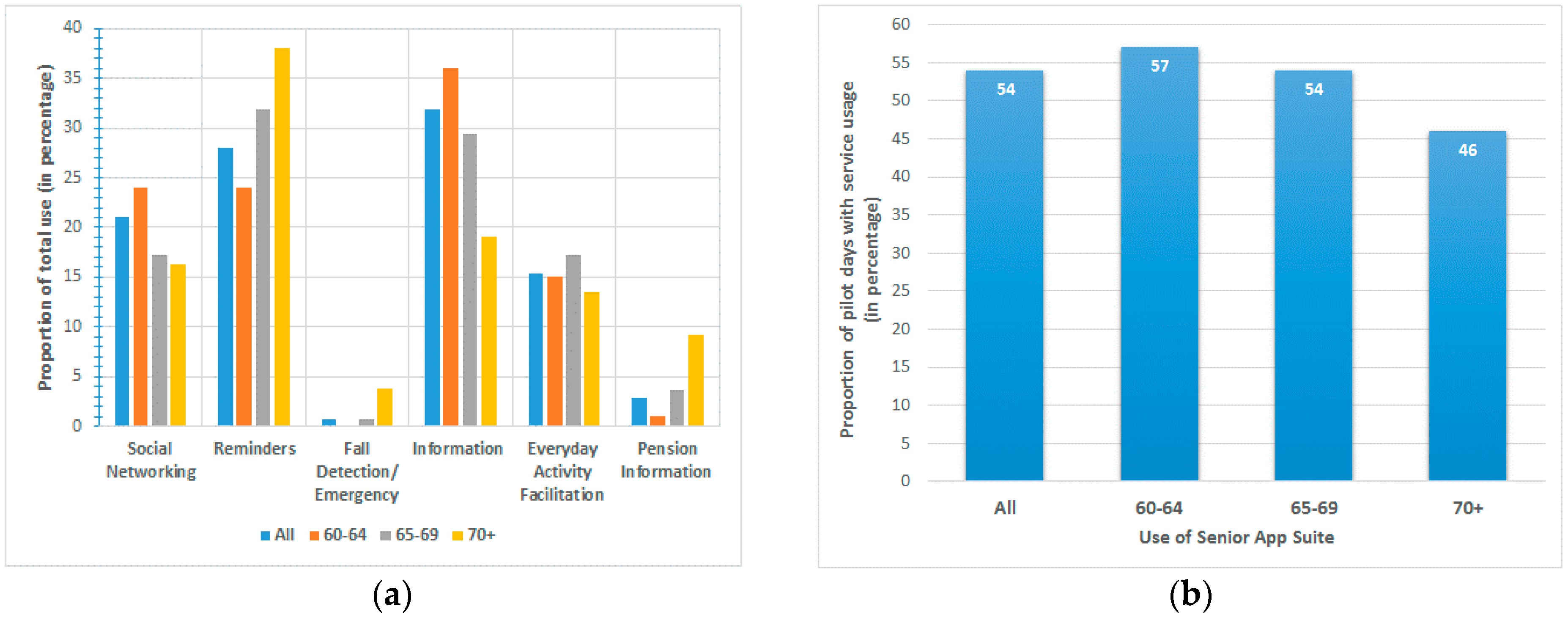
| Construct | Items | Mean | SD | ICR | Construct | Items | Mean | SD | ICR |
|---|---|---|---|---|---|---|---|---|---|
| PU | 4 | 5.57 | 1.23 | 0.93 | CPLAY | 4 | 5.33 | 1.17 | 0.84 |
| PEOU | 4 | 5.94 | 1.11 | 0.91 | CANX | 4 | 5.48 | 1.26 | 0.88 |
| CSE | 4 | 5.89 | 1.25 | 0.83 | ENJ | 3 | 5.60 | 1.06 | 0.87 |
| PEC | 4 | 5.83 | 1.18 | 0.79 | OUT | 3 | 5.54 | 1.08 | 0.84 |
| Item | Mean | SD | Mean a | SD a |
|---|---|---|---|---|
| I lack companionship | 1.88 | 0.73 | 1.82 | 0.72 |
| I feel left out | 1.85 | 0.71 | 1.81 | 0.74 |
| I feel isolation from others | 1.98 | 0.65 | 1.83 | 0.67 |
| There are people I can turn to b | 1.76 | 0.60 | 1.75 | 0.62 |
| All items | 37.40 | 7.21 | 36.37 | 7.85 |
| AAL System | SN | A/MR | FD | I | EAF | PI | SOS | Technology |
|---|---|---|---|---|---|---|---|---|
| WeCare | Yes | Yes | – | +++ | +++ | – | – | Web |
| AMCOSOP | Yes | Yes | – | ++ | ++ | – | – | Web |
| Go-myLife | Yes | Yes | – | ++ | ++ | – | – | Web/Mob |
| SI-Screen | Yes | Yes | – | ++ | +++ | – | – | Web/Mob |
| JOIN-IN | Yes | – | – | ++ | +++ | – | – | Web |
| SoMedAll | Yes | Yes | – | ++ | ++ | – | – | Web |
| Elder Spaces | Yes | Yes | – | ++ | ++ | – | – | Web |
| Oscar Senior | Yes | Yes | – | ++ | +++ | – | – | Mob |
| Seniors Phone | Yes | – | – | + | ++ | – | Yes | Mob |
| Senior App Suite | Yes | Yes | Yes | +++ | +++ | Yes | Yes | Web/Mob |
© 2017 by the authors. Licensee MDPI, Basel, Switzerland. This article is an open access article distributed under the terms and conditions of the Creative Commons Attribution (CC BY) license (http://creativecommons.org/licenses/by/4.0/).
Share and Cite
Goumopoulos, C.; Papa, I.; Stavrianos, A. Development and Evaluation of a Mobile Application Suite for Enhancing the Social Inclusion and Well-Being of Seniors. Informatics 2017, 4, 15. https://doi.org/10.3390/informatics4030015
Goumopoulos C, Papa I, Stavrianos A. Development and Evaluation of a Mobile Application Suite for Enhancing the Social Inclusion and Well-Being of Seniors. Informatics. 2017; 4(3):15. https://doi.org/10.3390/informatics4030015
Chicago/Turabian StyleGoumopoulos, Christos, Ilia Papa, and Andreas Stavrianos. 2017. "Development and Evaluation of a Mobile Application Suite for Enhancing the Social Inclusion and Well-Being of Seniors" Informatics 4, no. 3: 15. https://doi.org/10.3390/informatics4030015





